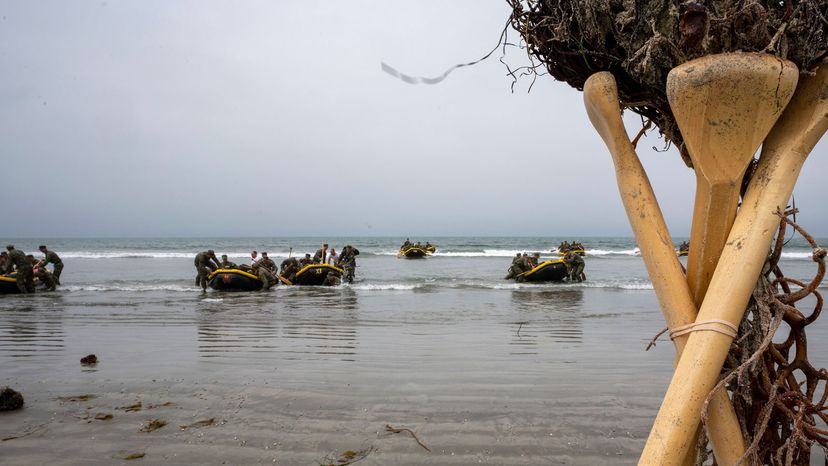Advanced Navy SEAL Training

When BUD/S training is over, those remaining move on to basic parachute training at the Army Airborne School at Fort Benning, Georgia.
This training lasts for three weeks and is followed by two weeks of Special Operations Technician Training at the Naval Special Warfare Center in Coronado, California. Here's where trainees learn about diving medicine and medical skills called Special Operations Medical Sergeant Course (18-D). This is a 30-week course on burns, gunshot wounds and trauma.
Advertisement
It is after successful completion of the 18-D that trainees are given their Naval Enlisted Code (NEC). They now either serve the remainder of their first enlistment (two-and-a-half to three years) in a SEAL delivery vehicle team (SDV) or SEAL team.
Further training is provided in Special Reconnaissance and Direct Action, where SEALs learn more about completing tasks such as:
- tactical ambushes
- sniper assaults
- close-quarters combat
- underwater demolition
- combat-swimming attacks
- close air support
- naval gunfire support
- raids
- hydrographic reconnaissance
SEAL Assignments and Deployment
New SEALs report immediately to their operational units and begin 18 months of pre-deployment training, which includes extensive individual-, platoon-, and squadron-level training in preparation for deployment with their SEAL platoon. This training/deployment cycle is repeated to make sure SEALs are constantly improving and learning new skills that can save lives and help missions succeed.
In the following sections, we'll take a look at some examples of SEAL missions.